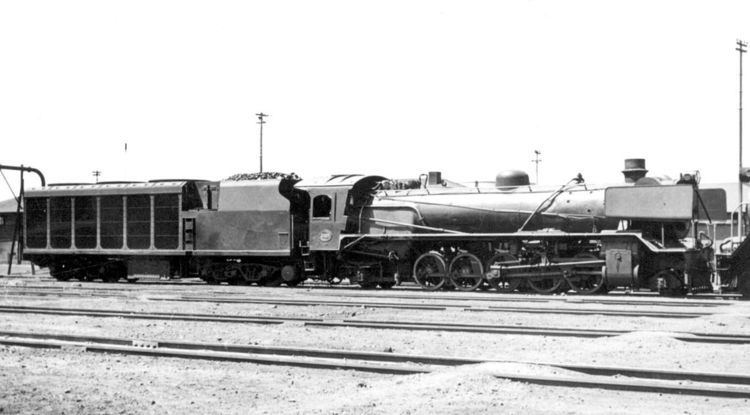Builder Henschel and Son In service 1950 | Designer Henschel and Son Works no. T28388 Configuration 3-axle bogies | |
 | ||
The South African type CL tender was a condensing steam locomotive tender.
Contents
The single Type CL condensing tender entered service in 1950, as tender to the modified Class 20 2-10-2 Santa Fe type experimental condensing steam locomotive.
Manufacturer
The Type CL tender was built in 1950 by Henschel and Son, with works number T28388.
In 1950, the South African Railways (SAR) modified its sole Class 20 locomotive to an experimental condensing locomotive, equipped with a condensing tender which had been ordered from Henschel in 1948.
Characteristics
The tender was designed for a Deutsche Reichsbahn Class 52 condensing locomotive and was modified slightly for the SAR. It rode on Buckeye three-axle bogies to reduce the axle load and had an 11 long tons (11.2 tonnes) coal capacity, a 3,900 imperial gallons (17,700 litres; 4,680 US gallons) water capacity which included the underbelly condensate tank, and a 13 long tons 17 hundredweight 3 quarters (14,110 kilograms) maximum axle load. The tender was capable of condensing 27,000 pounds (12,000 kilograms) of exhaust steam per hour in maximum operating temperatures of between 100 and 110 degrees Fahrenheit (38 and 43 degrees Celsius).
Locomotive
Only the modified Class 20 locomotive ran with the Type CL tender. The tender was designed in such a way that it could also be used on a modified Class 19D or Class 24 locomotive, but such modifications never took place.
During trials, a saving of between 88% and 93% on water as well as a lower coal consumption were attained, the latter brought about by the higher temperature of the feedwater condensate. Depending on the operating conditions, a water range of between 400 and 680 miles (640 and 1,090 kilometres) was achieved. The positive results of the condensing trials led to the introduction of the Class 25 4-8-4 condensing locomotive fleet between 1953 and 1955.
Classification letters
Since many tender types are interchangeable between different locomotive classes and types, a tender classification system was adopted by the SAR. The first letter of the tender type indicates the classes of engines to which it can be coupled. The two "C_" tender types were condensing tenders and could only be used with the specific locomotive class for which each was designed.
The second letter indicates the tender's water capacity. The "_L" tenders had a capacity of 3,900 imperial gallons (17,700 litres; 4,680 US gallons).
